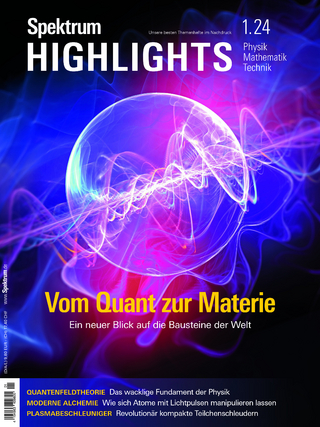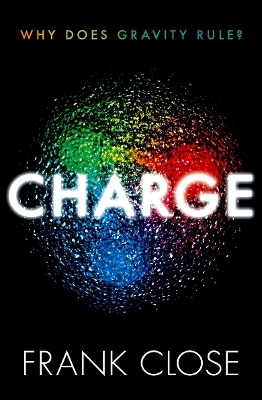
Pions to Quarks
Cambridge University Press (Verlag)
978-0-521-10073-1 (ISBN)
Part I. Introduction; 1. Pions to quarks: particle physics in the 1950s Laurie M Brown, Max Dresden and Lillian Hoddeson; 2. Particle physics in the early 1950s Chen Ning Yang; 3. An historian's interest in particle physics J. L. Heilbron; Part II. Particle discoveries in cosmic rays; 4. Cosmic-ray cloud-chamber contributions to the discovery of the strange particles in the decade 1947–1957 George D. Rochester; 5. Cosmic-ray work with emulsions in the 1940s and 1950s Donald H. Perkins; Part III. High-energy nuclear physics; Learning about nucleon resonances with pion photoproduction Robert L. Walker; 7. A personal view of nucleon structure as revealed by electron scattering Robert Hofstadter; 8. Comments on electromagnetic form factors of the nucleon Robert G. Sachs and Kameshwar C. Wali; Part IV. The new laboratory; 9. The making of an accelerator physicist Matthew Sands; 10. Accelerator design and construction in the 1950s John P. Blewett; 11. Early history of the Cosmotron and AGS Ernest D. Courant; 12. Panel on accelerators and detectors in the 1950s Lawrence W. Jones, Luis W. Alvarez, Ugo Amaldi, Robert Hofstadter, Donald W. Kerst, Robert R. Wilson; 13. Accelerators and the Midwestern Universities Research Association in the 1950s Donald W. Kerst; 14. Bubbles, sparks and the postwar laboratory Peter Galison; 15. Development of the discharge (spark) chamber in Japan in the 1950s Shuji Fukui; 16. Early work at the Bevatron: a personal account Gerson Goldhaber; 17. The discovery of the antiproton Owen Chamberlain; 18. On the antiproton discovery Oreste Piccioni; Part V. The Strange Particles; 19. The hydrogen bubble chamber and the strange resonances Luis W. Alvarez; 20. A particular view of particle physics in the fifties Jack Steinberger; 21. Strange particles William Chinowsky; 22. Strange particles: production by Cosmotron beams as observed in diffusion cloud chambers William B. Fowler; 23. From the 1940s into the 1950s Abraham Pais; Part VI. Detection of the neutrino Frederick Reines; 25. Recollections on the establishment of the weak-interaction notion Bruno M. Pontecorvo; 26. Symmetry and conservation laws in particle physics in the fifties Louis Michel; 27. A connection between the strong and weak interactions Sam B. Treiman; Part VII. Weak interactions and parity nonconservation; 29. The nondiscovery of parity nonconservation Allan Franklin; 30. K-meson decays and parity violation Richard H. Dalitz; 31. An Experimentalist's Perspective Val L. Fitch; 32. The early experiments leading to the V – A interaction Valentine L. Telegdi; 33. Midcentury adventures in particles physics E. C. G. Sudarshan; Part VIII. The particle physics community; 34. The postwar political economy of high-energy physics Robert Seidel; 35. The history of CERN during the early 1950s Edoardo Amaldi; 36. Arguments pro and contra the European laboratory in the participating countries Armin Hermann; 37. Physics and excellences of the life it brings Abdus Salam; 38. Social aspects of Japanese particle physics in the 1950s Michiji Konuma; Part IX. Theories of hadrons; 39. The early S-matrix theory and its propagation (1942–1952) Helmut Rechenberg; 40. From field theory to phenomenology: the history of dispersion relations Andy Pickering; 41. Particles as S-matrix poles: hadron democracy Geoffrey F. Chew; 42. The general theory of quantised fields in the 1950s Arthur S. Wrightman; 43. The classification and structure of hadrons Yuval Ne'eman; 44. Gauge principle, vector-meson dominance and spontaneous symmetry breaking Yoichiro Nambu; Part X. Personal overviews; 45. Scientific impact of the first decade of the Rochester conferences (1950–1960) Robert E. Marshak; 46. Some reflections on the history of particle physics in the 1950s Silvan S. Schweber; 47. Progress in elementary particle theory 1950–1964 Murray Gell-Mann.
| Erscheint lt. Verlag | 29.1.2009 |
|---|---|
| Zusatzinfo | Worked examples or Exercises |
| Verlagsort | Cambridge |
| Sprache | englisch |
| Maße | 152 x 229 mm |
| Gewicht | 1110 g |
| Themenwelt | Naturwissenschaften ► Physik / Astronomie ► Hochenergiephysik / Teilchenphysik |
| ISBN-10 | 0-521-10073-9 / 0521100739 |
| ISBN-13 | 978-0-521-10073-1 / 9780521100731 |
| Zustand | Neuware |
| Haben Sie eine Frage zum Produkt? |
aus dem Bereich


